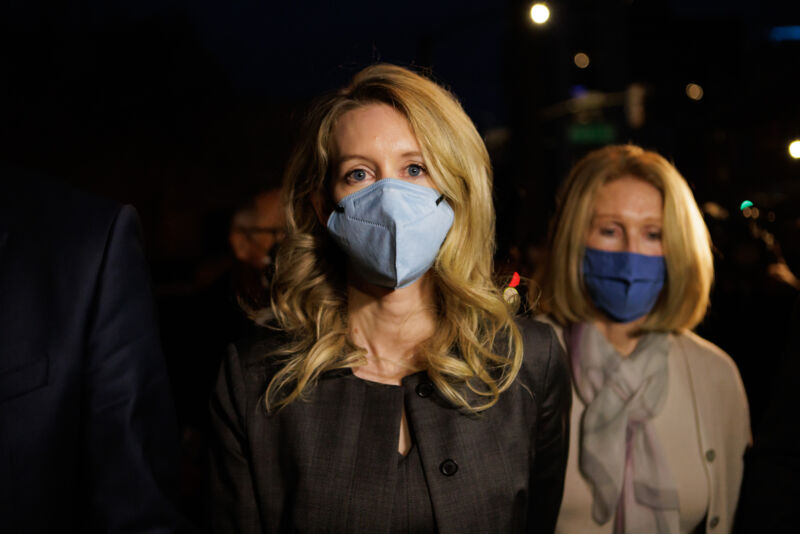Holmes’ testimony backfired—jurors rated her the least credible witness

Enlarge / Theranos founder Elizabeth Holmes, center, and her family leave the Robert F. Peckham Federal Building and US Courthouse after the jury found her guilty on four counts in San Jose, Calif., on Monday, January 3, 2022. (credit: Dai Sugano/MediaNews Group/The Mercury News)
When jurors deliberated the case of Elizabeth Holmes, the founder of failed medical diagnostic startup Theranos, two pieces of evidence helped them convict her of fraud: a faked pharmaceutical company report and inflated financial projections.
Holmes was convicted earlier this week of one count of conspiracy to commit wire fraud and three counts of wire fraud, all involving investors. She was acquitted of defrauding patients, and the jury deadlocked on charges that she defrauded three other investors. The four women and eight men who served as jurors reached their decision after more than 50 hours of deliberations.
On the four guilty counts, jurors found the evidence clearly convincing, with one juror describing two pieces as smoking guns" in an interview with The Wall Street Journal. One piece was a Theranos-authored report that Holmes gave to investors; it had a Pfizer logo at the top of every page, making it look like the pharmaceutical company had either written or approved its findings. The second was a set of financial projections that Holmes shared with investors, including Lakeshore Capital Management, the DeVos family office.
Read 11 remaining paragraphs | Comments